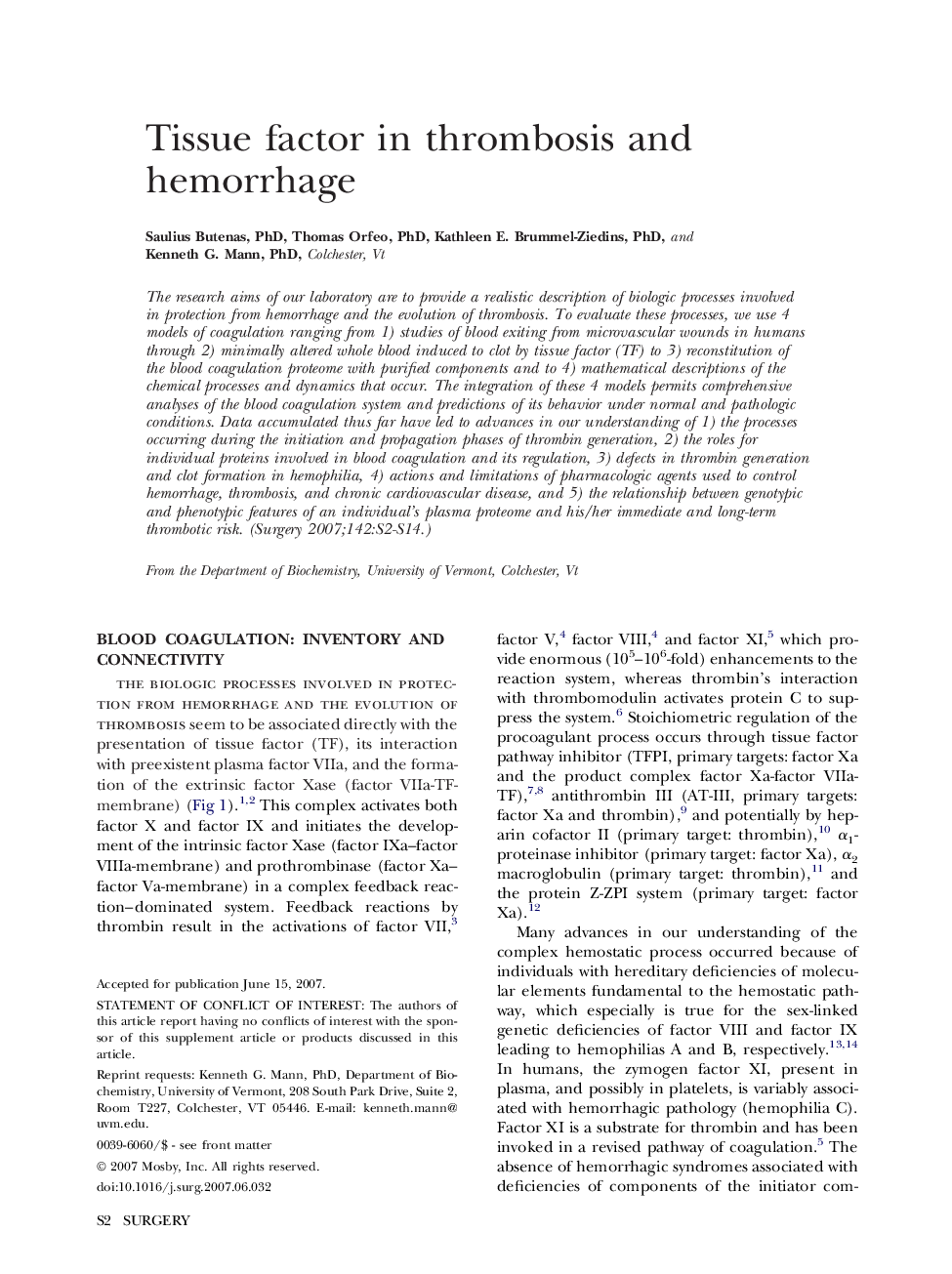| Article ID | Journal | Published Year | Pages | File Type |
|---|---|---|---|---|
| 4309616 | Surgery | 2007 | 13 Pages |
The research aims of our laboratory are to provide a realistic description of biologic processes involved in protection from hemorrhage and the evolution of thrombosis. To evaluate these processes, we use 4 models of coagulation ranging from 1) studies of blood exiting from microvascular wounds in humans through 2) minimally altered whole blood induced to clot by tissue factor (TF) to 3) reconstitution of the blood coagulation proteome with purified components and to 4) mathematical descriptions of the chemical processes and dynamics that occur. The integration of these 4 models permits comprehensive analyses of the blood coagulation system and predictions of its behavior under normal and pathologic conditions. Data accumulated thus far have led to advances in our understanding of 1) the processes occurring during the initiation and propagation phases of thrombin generation, 2) the roles for individual proteins involved in blood coagulation and its regulation, 3) defects in thrombin generation and clot formation in hemophilia, 4) actions and limitations of pharmacologic agents used to control hemorrhage, thrombosis, and chronic cardiovascular disease, and 5) the relationship between genotypic and phenotypic features of an individual’s plasma proteome and his/her immediate and long-term thrombotic risk.
